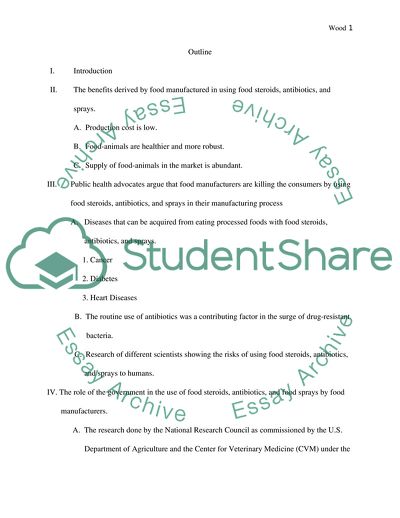Cite this document
(The Benefits and Risks of Food Steroids, Antibiotics, and Sprays in Research Paper - 1, n.d.)
The Benefits and Risks of Food Steroids, Antibiotics, and Sprays in Research Paper - 1. Retrieved from https://studentshare.org/english/1784156-the-benefits-and-risks-of-food-steroids-antibiotics-and-sprays-in-the-eye-of-the-food-manufacturers-and-the-consumers
The Benefits and Risks of Food Steroids, Antibiotics, and Sprays in Research Paper - 1. Retrieved from https://studentshare.org/english/1784156-the-benefits-and-risks-of-food-steroids-antibiotics-and-sprays-in-the-eye-of-the-food-manufacturers-and-the-consumers
(The Benefits and Risks of Food Steroids, Antibiotics, and Sprays in Research Paper - 1)
The Benefits and Risks of Food Steroids, Antibiotics, and Sprays in Research Paper - 1. https://studentshare.org/english/1784156-the-benefits-and-risks-of-food-steroids-antibiotics-and-sprays-in-the-eye-of-the-food-manufacturers-and-the-consumers.
The Benefits and Risks of Food Steroids, Antibiotics, and Sprays in Research Paper - 1. https://studentshare.org/english/1784156-the-benefits-and-risks-of-food-steroids-antibiotics-and-sprays-in-the-eye-of-the-food-manufacturers-and-the-consumers.
“The Benefits and Risks of Food Steroids, Antibiotics, and Sprays in Research Paper - 1”. https://studentshare.org/english/1784156-the-benefits-and-risks-of-food-steroids-antibiotics-and-sprays-in-the-eye-of-the-food-manufacturers-and-the-consumers.


